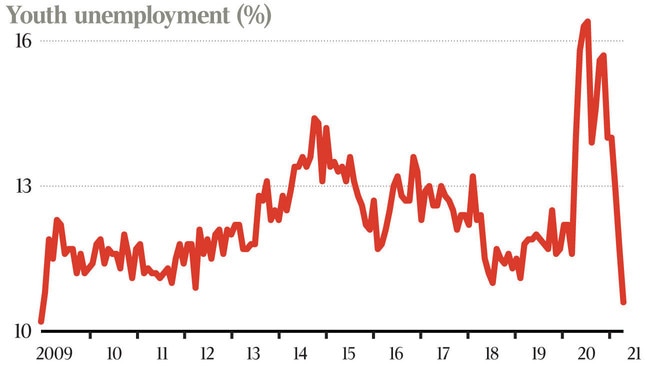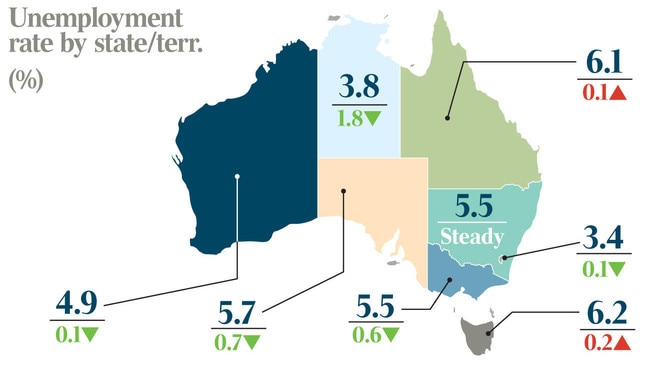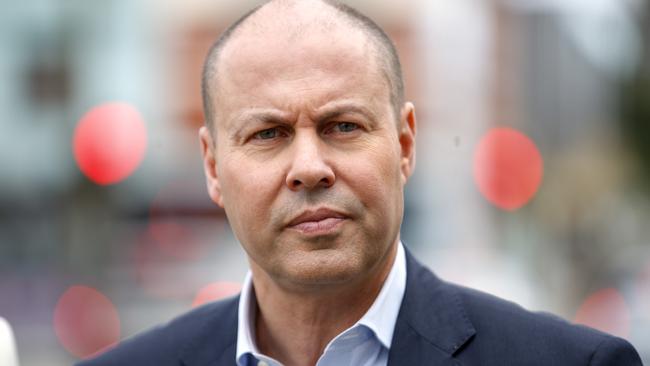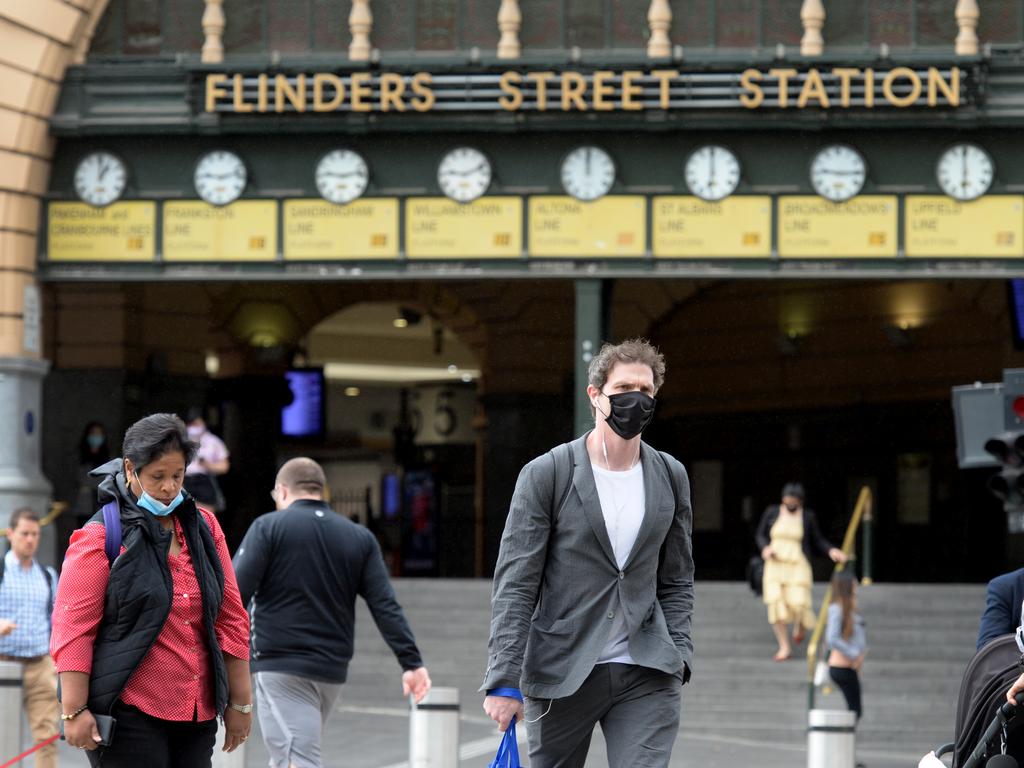Unemployment falls to 5.5% in April from 5.7% after JobKeeper ends
The end of the federal government’s $89bn JobKeeper program has not led to a surge in unemployment, new figures show.

The end of the federal government’s $89bn JobKeeper program has not led to a surge in unemployment, with the first labour force figures since the wage subsidy wound up showing only a small drop in employment and a fall in the jobless rate to 5.5 per cent.
Despite Treasury warnings earlier this year that up to 150,000 jobs could be lost when JobKeeper finished at the end of March, data from the Australian Bureau of Statistics showed employment fell by 31,000 in April — after the economy added 33,800 full-time jobs in the month, but shed 64,400 part-time positions.
Josh Frydenberg said the falling unemployment rate — now at a 13-month low at 5.5 per cent, down 0.2 percentage points in April after the ABS revised up March’s figure to 5.7 per cent — showed the government’s economic plan was working and there was no need to extend the program, as some had urged.
“If Labor had their way, the government would be spending more than $2 billion a month continuing JobKeeper. The government would have bought into an airline and the government would be using taxpayers money to subsidise childcare for families that earn more than $500,000 a year. The Labor Party will always spend more, and will always tax more.”
Mr Frydenberg said the speed of the recovery following the end of JobKeeper was ahead of what Treasury and the Reserve Bank had forecast, with new figures revealing 132,000 people had moved off income support since wage subsidies ended in March.
But Australian Council of Trade Unions secretary Sally McManus said the improving headline figures hid climbing job insecurity and there were still many workers “desperate for more hours or trapped in multiple insecure, unreliable jobs”.
“Job insecurity feeds low wage growth,” she said. ”The budget assumes consumer spending will increase, but how will it increase if wages go backwards.”
The jobs figures also showed an improving outlook for younger Australians, with youth unemployment down 1.1 per cent to 10.6 per cent — its lowest level since 2009 and well down from the 14 per cent rate recorded at the peak of the pandemic.

Underemployment, which measures those who have a job but would like to work more, fell from 8 per cent in March to a seven-year low of 7.8 per cent.
Bjorn Jervis, head of labour statistics at the ABS, said the end of JobKeeper “did not have a discernible impact on employment”. “We have not seen large changes in the indicators that would suggest a clear JobKeeper impact, such as an increase in people working reduced or zero hours for economic reasons or because they were leaving their job,” he said.
Despite the optimism, the figures confirmed only the second monthly drop in employment in the past 12 months, with the only other occurring in September — immediately ahead of the end of the first phase of JobKeeper.

In March, Treasury secretary Steven Kennedy told a Senate hearing he expected up to 150,000 workers could lose their jobs after the wage subsidy ended, although he added that his department remained confident there was a broadbased recovery in employment.
Economists had expected the unemployment rate to remain steady at 5.6 per cent, but that the number of people in work would increase by 15,000.

A drop in the participation rate from 66.3 per cent to 66 per cent explained the fall in the jobless measure from an upwardly revised 5.7 per cent in March, despite the net loss of jobs.
KPMG chief economist Brendan Rynne said there were “two counterbalancing forces” evident in Thursday’s numbers.
“There has been an immediate impact of the ending of JobKeeper on certain businesses which has seen some job losses, pushing down employment – but there has also been a continuing improvement in the underlying strength and recovery of the economy, which has been pulling up employment,” he said.

Dr Rynne said he hoped “the ongoing impact on the unemployment rate of the withdrawal of the JobKeeper life support will be more than equalled by the creation of new jobs”.
Deputy Labor leader Richard Marles welcomed the reduction in unemployment and the underemployment rate, but said the jobs recovery had a “long way to go”, with 1.8 million Australians looking for work.

“The budget baked in real wage decline over the next four years. So it’s difficult to feel positive about an economic recovery when people actually end up being worse off,” he said.
More Coverage








To join the conversation, please log in. Don't have an account? Register
Join the conversation, you are commenting as Logout